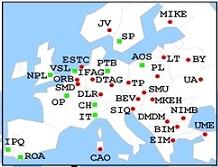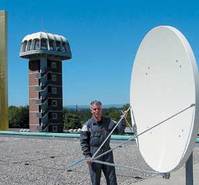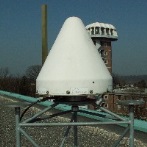International Comparisons

The computation of a Universal Time Coordinated (UTC) requires time and frequency comparisons of clocks that are distributed over the whole globe. Time and frequency transfer methods are thus an important part of time and frequency metrology. For comparisons of remote clocks various methods have been developed.
TWSTFT Comparisons

METAS operates a Two Way Satellite Time and Frequency Transfer (TWSTFT) station for the comparison of its atomic clocks with other National Metrology Institutes using geostationary telecom satellites. This is the most accurate method used for international comparisons with an uncertainty of about 1 nanosecond. The TWSTFT link is the official link between METAS and UTC, the international time scale.
GNSS Comparisons

As a backup to the TWSTFT link, METAS also operates One-way links via GNSS (Global Navigation Satellite System) receivers. The best known GNSS technique is GPS Common View (CV). Two time stations observe the same satellite at the same time and each station compares its local clock with the satellite clock. Taking the difference between the two sets of observations yields the difference between the local clocks of the stations. This method is realised at METAS with several multi-channel geodetic GPS receivers. With the same type of GPS receivers METAS also applies the PPP (Precise Point Positioning) geodetic data processing technique, which yields a better short-term stability as compared to the CV method.
Last modification 12.02.2019
Contact
Federal Institute of Metrology
Laboratory Photonics, Time and Frequency
Lindenweg 50
CH-3003
Bern-Wabern
T
+41 58 387 01 11

